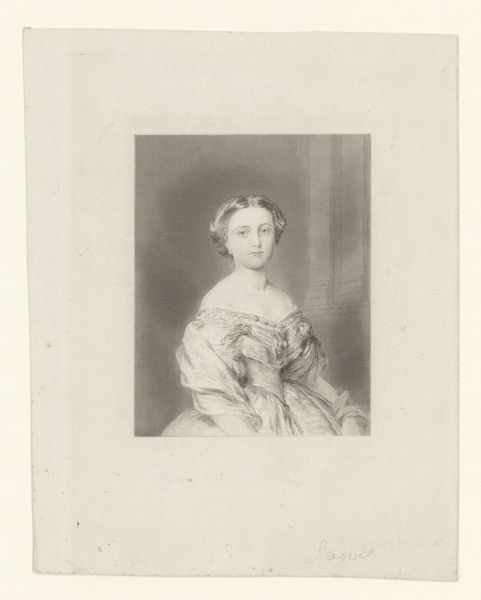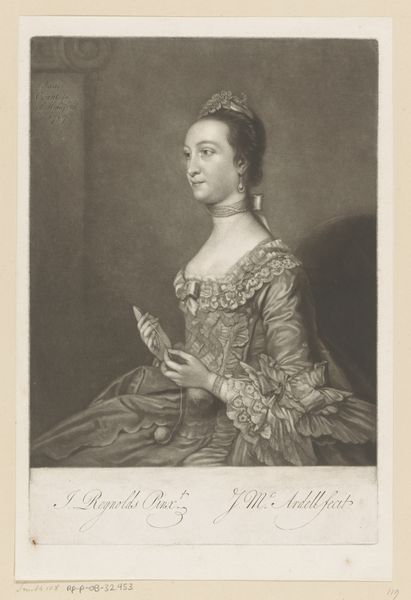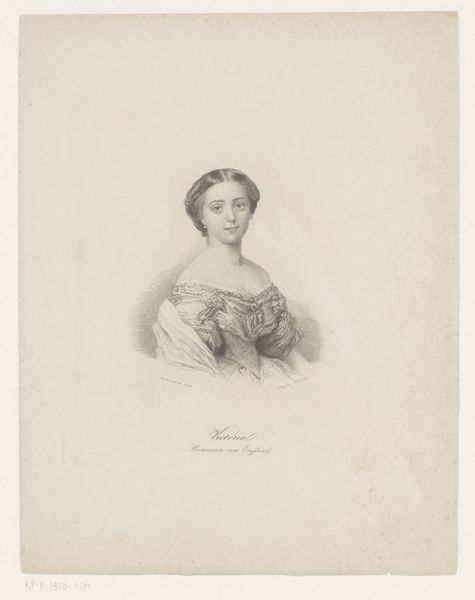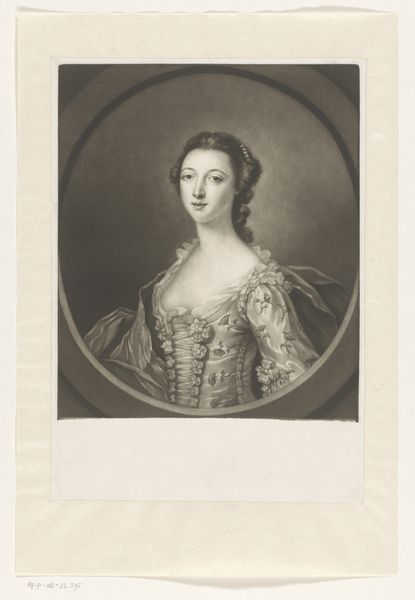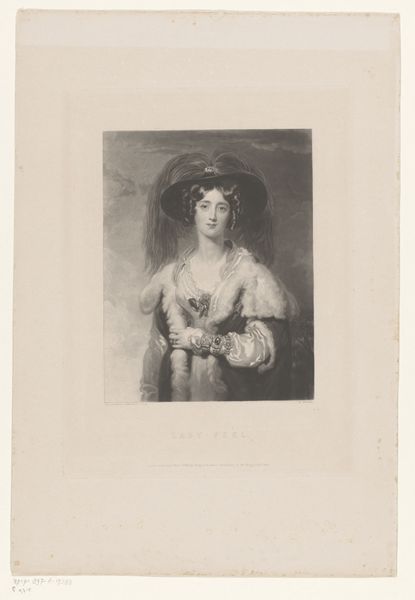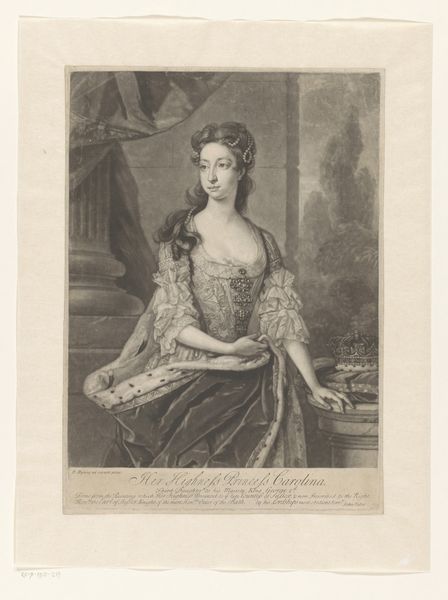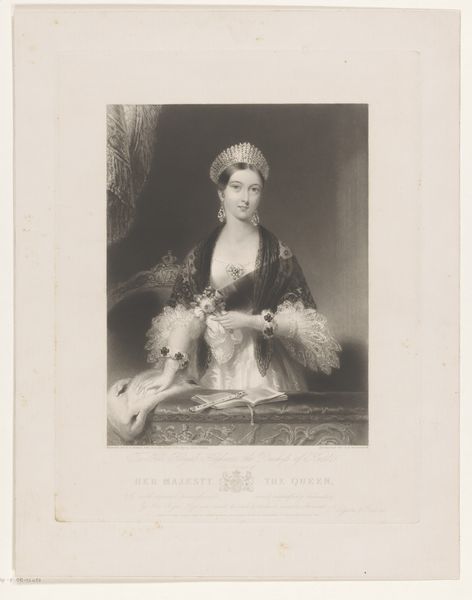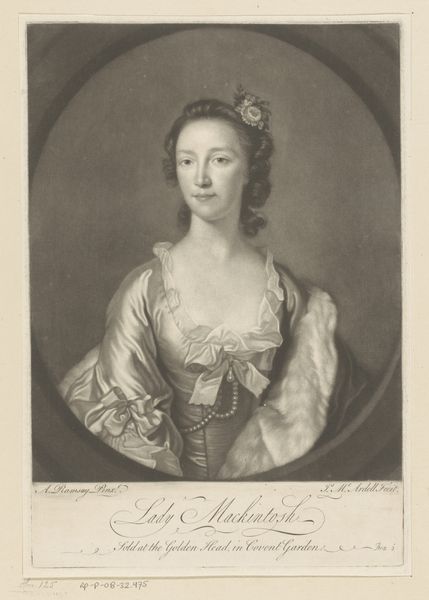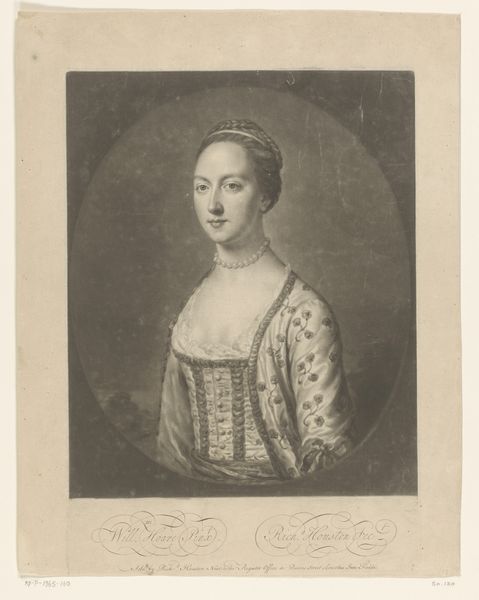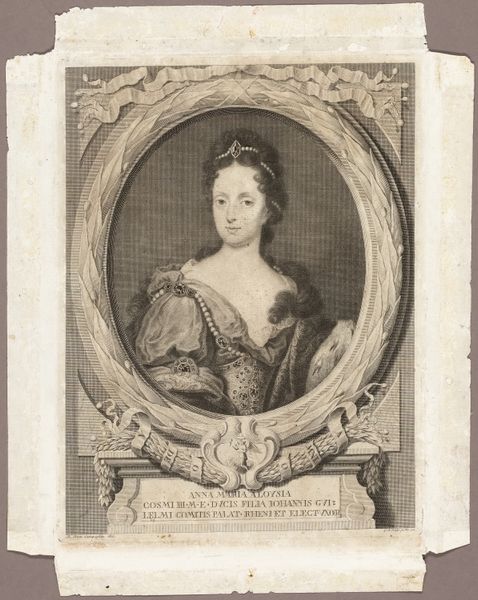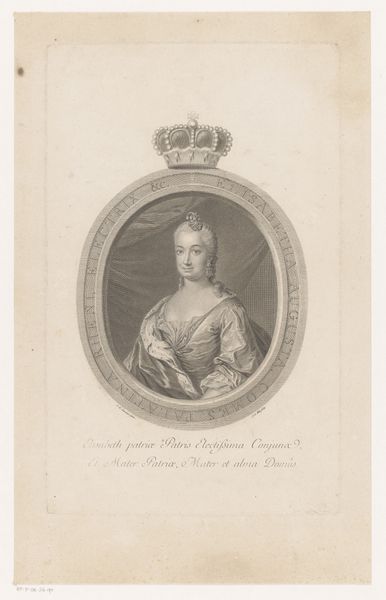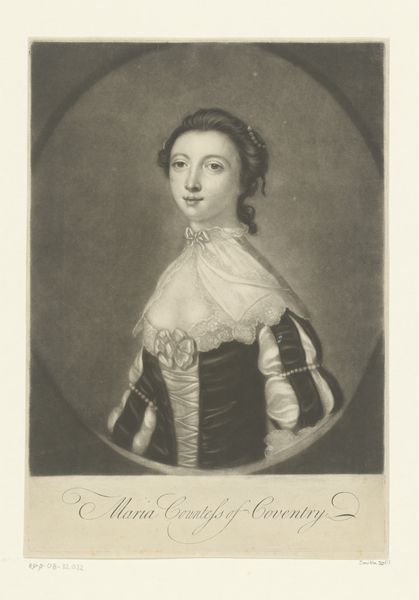
print, engraving
#
portrait
# print
#
figuration
#
archive photography
#
historical photography
#
romanticism
#
history-painting
#
engraving
Dimensions: height 590 mm, width 442 mm
Copyright: Rijks Museum: Open Domain
Editor: Here we have François Forster’s "Portret van Victoria van het Verenigd Koninkrijk," likely from 1846-1847. It’s an engraving and, to me, there's such a strong sense of formality in this portrait. How do you interpret this work? Curator: What strikes me is how this seemingly straightforward portrait reinforces existing power dynamics while subtly negotiating Victoria's evolving role. It's not just about representing her physical likeness, but about constructing and disseminating an image of ideal queenship in the 19th century. Editor: So, what does this ideal queenship mean? Curator: Well, look at the details: the dress, the jewels, the soft romantic backdrop. It speaks of elegance and grace but also carefully avoids any suggestion of overtly challenging male authority. How might the image itself – as a widely circulated print – impact its message and reception? Editor: Because it's reproducible, right? The image gets disseminated wider and so does the message of power that you pointed out. Was she as contained as she appears here, really? Curator: That's the critical question, isn’t it? These official portraits existed alongside, and often in tension with, the realities of her political life and personal agency. Thinking about gender and power, how did Victoria use and subvert these visual expectations throughout her reign? Editor: I never considered that prints could be such carefully crafted forms of rhetoric. Thank you for shifting my perspective. Curator: And thank you for questioning the assumptions we bring to historical imagery. There's always more than meets the eye.
Comments
No comments
Be the first to comment and join the conversation on the ultimate creative platform.
